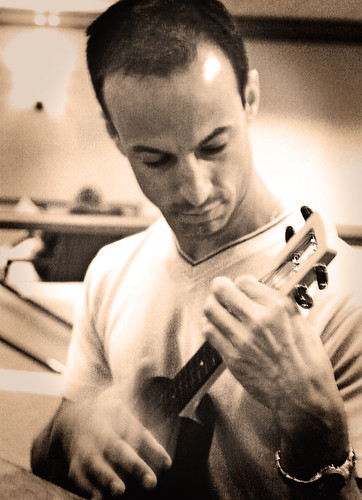THE TWELVE GRAPES OF WRATH.
The New Year holiday in Spain is an important one—especially for the teenage and twenty-something crowd. For this group, the holiday is divided into three distinct phases: (a) dinner and grapes with family; (b) beer, wine and whisky with friends; and (c) New Years Day with Satan.
Phase 1 kicks-off the holiday on a wholesome note. Family gathers in the home for a large, New Year’s Eve dinner. After dinner, the family awaits midnight; at which time a special ceremony occurs.
Each person holds a bowl of twelve grapes and, at the first stroke of midnight, begins quickly eating them one at a time. If you succeed in eating all twelve grapes by the twelfth stroke of midnight, then you will have good luck throughout the coming year. Failure to eat the grapes in a timely manner brings bad luck. If you manage to pop all twelve into your mouth but one enters a lung, then yes—you (technically) should have good luck. But all things considered, it might be wise to avoid scheduling any skydiving excursions for the next twelve months.
After the grapes are eaten and all parties have either been kissed or administered the Heimlich Maneuver, the family opens and drinks a bottle of cava; thus ending Phase 1.
Upon commencement of Phase 2, the more youthful members of the family—and/or those who do not have small children—don their finest suits and evening gowns, wave bye-bye to the parents, and proceed to one or more parties at friends’ homes or night clubs.
Now…maybe it’s the fault of my American informality, but I’ve never understood why—given the hours of debauchery that are known to lie ahead—Spanish New Year’s Eve revelers insist on dressing to the nines. Surely it doesn’t bode well for your 100€ Hermés tie or 500€ Channel gown to be squeezed into a room where dozens (or hundreds!) of colleagues are dancing with a cigarette in one hand and a glass of red wine (most likely, their ninth of the evening) in the other. But I digress.
As the sun begins to rise, those revelers who are not lying prone in a puddle of drool leave the party in search of a bar or restaurant for a breakfast of hot chocolate and churros. This, of course, presents one last opportunity to irreparably stain any Hermés ties or Channel evening gowns that miraculously survived the previous seven hours in tact. The partiers then stagger home and into bed.
Phase 3 begins at 3pm on New Year’s Day or when the party-goer’s mother wakes him up; whichever occurs first. The rise-‘n-shine reflex of a Spanish mother is always a threat, because Spanish youths—unlike their US counterparts—typically live with their parents until marriage or age 43; whichever occurs first.
The bleary-eyed, sleep-deprived New Year’s Eve reveler then hauls himself from bed and spends the remainder of New Year’s Day savoring a crushing hangover; in all of its temple-throbbing, stomach-churning, tongue-coated glory. At 11pm, the by-now-long-suffering youth returns to bed, only to discover that he is unable to sleep because—let me remind—he didn’t rise until 3pm that same afternoon. If he’s really, really unlucky, the next morning will be a work day.
That pretty well summarizes the New Year holiday experience for the average young Spaniard. And me? Do I conform to this behavioral template? Not exactly. Here’s how I typically spend my New Year holiday in Spain.
I scrupulously adhere to Phase 1, after which I hit the sack. I rise—feeling chipper and well-rested—early on New Year’s Day morning, and promptly don a jogging suit. I then go to the streets of Madrid and chuckle at the disheveled, staggering, suit-wearing hordes trying to remember which building (if any) is that of their parents. When they get closer, I commence a vigorous session of deep-knee bends and jumping jacks on the sidewalk; displaying to all the joys of youth, health and vivacity.
Then, if the audience seems less than appreciative, I run. I usually don’t need to run very fast.
.jpg)

.jpg)
.jpg)
.jpg)
.jpg)
.jpg)
.jpg)
.jpg)
.jpg)
.jpg)

